Dutta, Ashutosh, Hammad, Eman, Enright, Michael, Behmann, Fawzi, Chorti, Arsenia, Cheema, Ahmad, Kadio, Kassi, Urbina-Pineda, Julia, Alam, Khaled, Limam, Ahmed et al..
2022.
Security and Privacy. 2022 IEEE Future Networks World Forum (FNWF). :1–71.
The digital transformation brought on by 5G is redefining current models of end-to-end (E2E) connectivity and service reliability to include security-by-design principles necessary to enable 5G to achieve its promise. 5G trustworthiness highlights the importance of embedding security capabilities from the very beginning while the 5G architecture is being defined and standardized. Security requirements need to overlay and permeate through the different layers of 5G systems (physical, network, and application) as well as different parts of an E2E 5G architecture within a risk-management framework that takes into account the evolving security-threats landscape. 5G presents a typical use-case of wireless communication and computer networking convergence, where 5G fundamental building blocks include components such as Software Defined Networks (SDN), Network Functions Virtualization (NFV) and the edge cloud. This convergence extends many of the security challenges and opportunities applicable to SDN/NFV and cloud to 5G networks. Thus, 5G security needs to consider additional security requirements (compared to previous generations) such as SDN controller security, hypervisor security, orchestrator security, cloud security, edge security, etc. At the same time, 5G networks offer security improvement opportunities that should be considered. Here, 5G architectural flexibility, programmability and complexity can be harnessed to improve resilience and reliability. The working group scope fundamentally addresses the following: •5G security considerations need to overlay and permeate through the different layers of the 5G systems (physical, network, and application) as well as different parts of an E2E 5G architecture including a risk management framework that takes into account the evolving security threats landscape. •5G exemplifies a use-case of heterogeneous access and computer networking convergence, which extends a unique set of security challenges and opportunities (e.g., related to SDN/NFV and edge cloud, etc.) to 5G networks. Similarly, 5G networks by design offer potential security benefits and opportunities through harnessing the architecture flexibility, programmability and complexity to improve its resilience and reliability. •The IEEE FNI security WG's roadmap framework follows a taxonomic structure, differentiating the 5G functional pillars and corresponding cybersecurity risks. As part of cross collaboration, the security working group will also look into the security issues associated with other roadmap working groups within the IEEE Future Network Initiative.
ISSN: 2770-7679
Hu, Yuanyuan, Cao, Xiaolong, Li, Guoqing.
2022.
The Design and Realization of Information Security Technology and Computer Quality System Structure. 2022 International Conference on Artificial Intelligence in Everything (AIE). :460–464.
With the development of computer technology and information security technology, computer networks will increasingly become an important means of information exchange, permeating all areas of social life. Therefore, recognizing the vulnerabilities and potential threats of computer networks as well as various security problems that exist in reality, designing and researching computer quality architecture, and ensuring the security of network information are issues that need to be resolved urgently. The purpose of this article is to study the design and realization of information security technology and computer quality system structure. This article first summarizes the basic theory of information security technology, and then extends the core technology of information security. Combining the current status of computer quality system structure, analyzing the existing problems and deficiencies, and using information security technology to design and research the computer quality system structure on this basis. This article systematically expounds the function module data, interconnection structure and routing selection of the computer quality system structure. And use comparative method, observation method and other research methods to design and research the information security technology and computer quality system structure. Experimental research shows that when the load of the computer quality system structure studied this time is 0 or 100, the data loss rate of different lengths is 0, and the correct rate is 100, which shows extremely high feasibility.
Mohammadi, Neda, Rasoolzadegan, Abbas.
2022.
A Pattern-aware Design and Implementation Guideline for Microservice-based Systems. 2022 27th International Computer Conference, Computer Society of Iran (CSICC). :1–6.
Nowadays, microservice architecture is known as a successful and promising architecture for smart city applications. Applying microservices in the designing and implementation of systems has many advantages such as autonomy, loosely coupled, composability, scalability, fault tolerance. However, the complexity of calling between microservices leads to problems in security, accessibility, and data management in the execution of systems. In order to address these challenges, in recent years, various researchers and developers have focused on the use of microservice patterns in the implementation of microservice-based systems. Microservice patterns are the result of developers’ successful experiences in addressing common challenges in microservicebased systems. However, hitherto no guideline has been provided for an in-depth understanding of microservice patterns and how to apply them to real systems. The purpose of this paper is to investigate in detail the most widely used and important microservice patterns in order to analyze the function of each pattern, extract the behavioral signatures and construct a service dependency graph for them so that researchers and enthusiasts use the provided guideline to create a microservice-based system equipped with design patterns. To construct the proposed guideline, five real open source projects have been carefully investigated and analyzed and the results obtained have been used in the process of making the guideline.
 Biblio
Biblio


